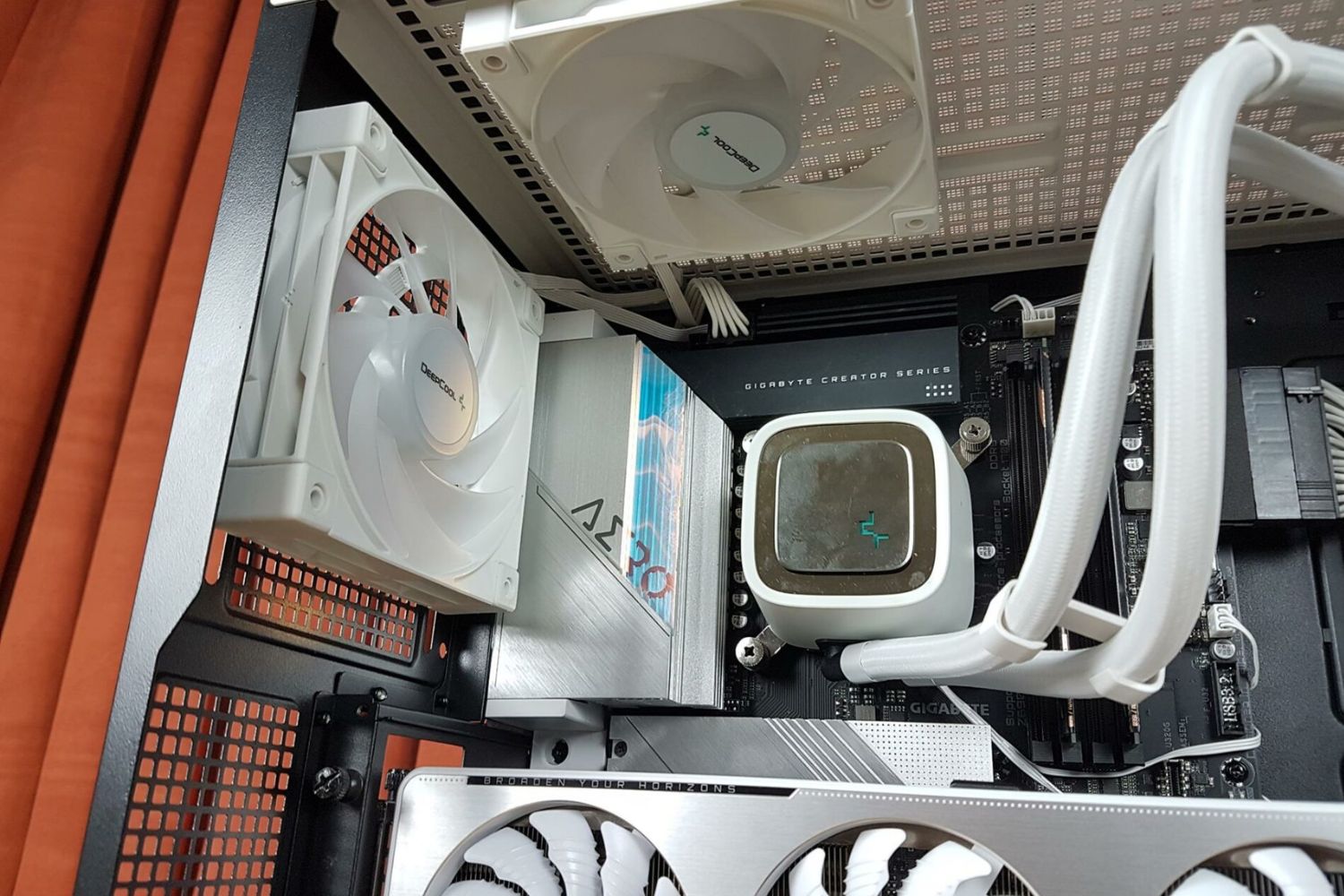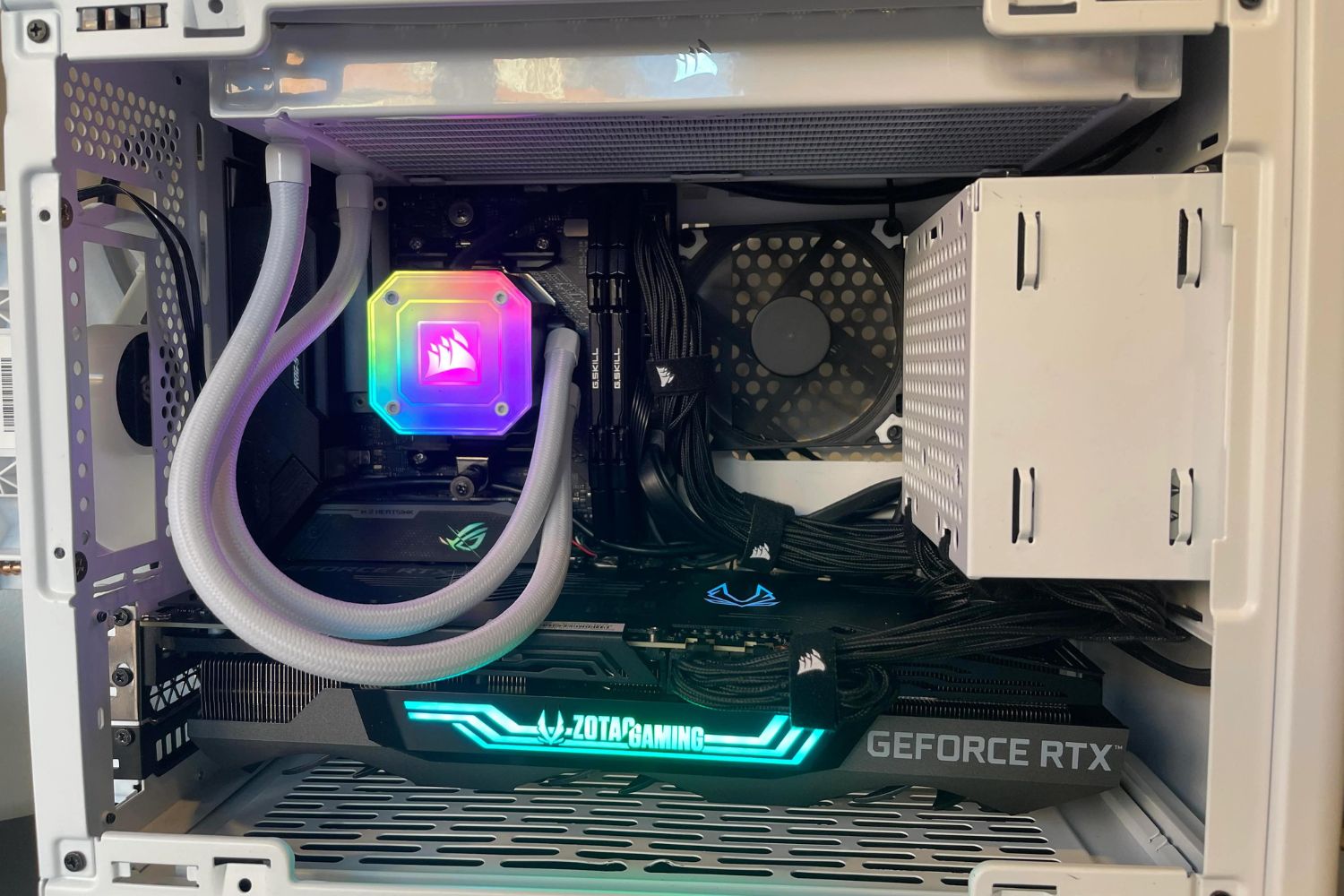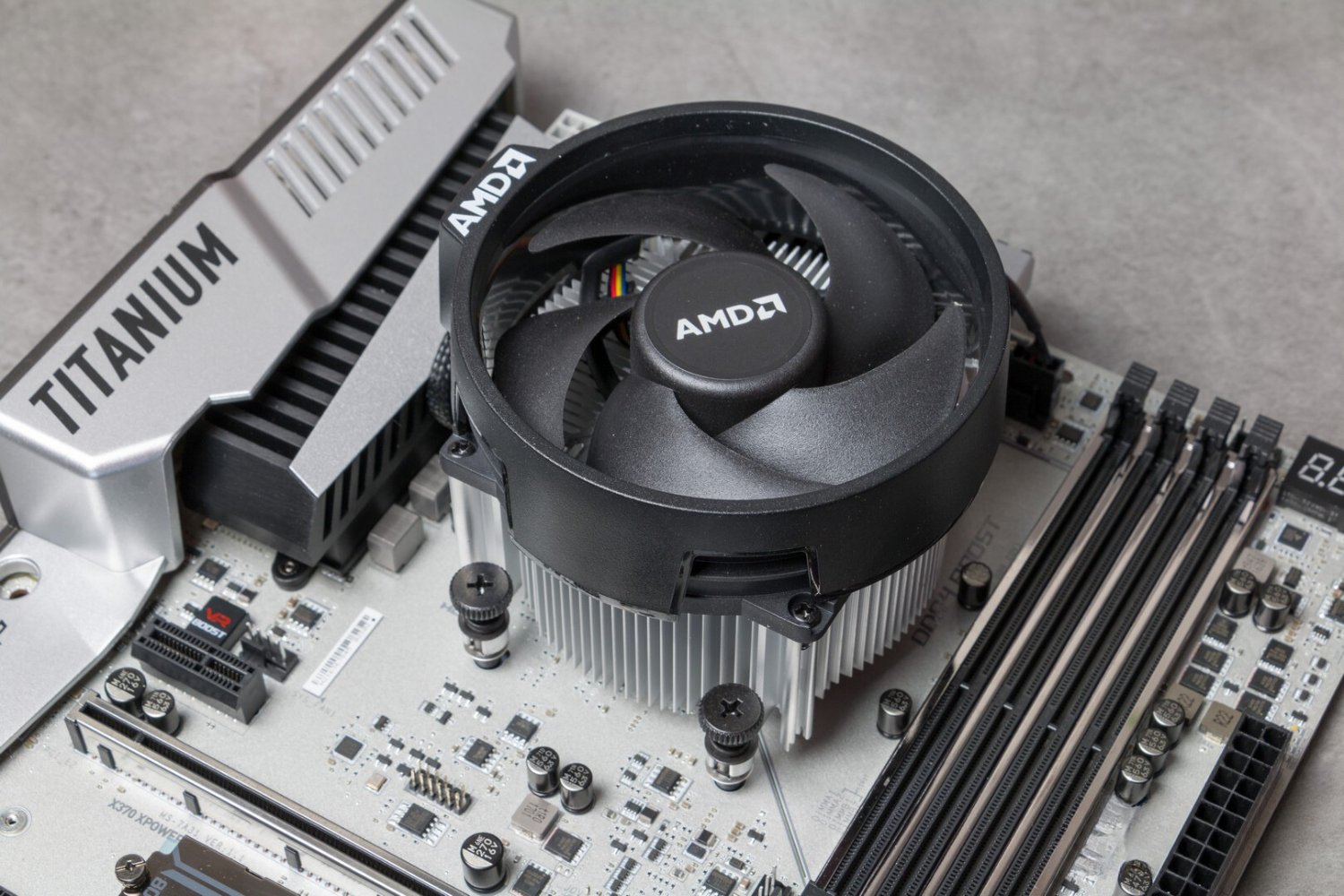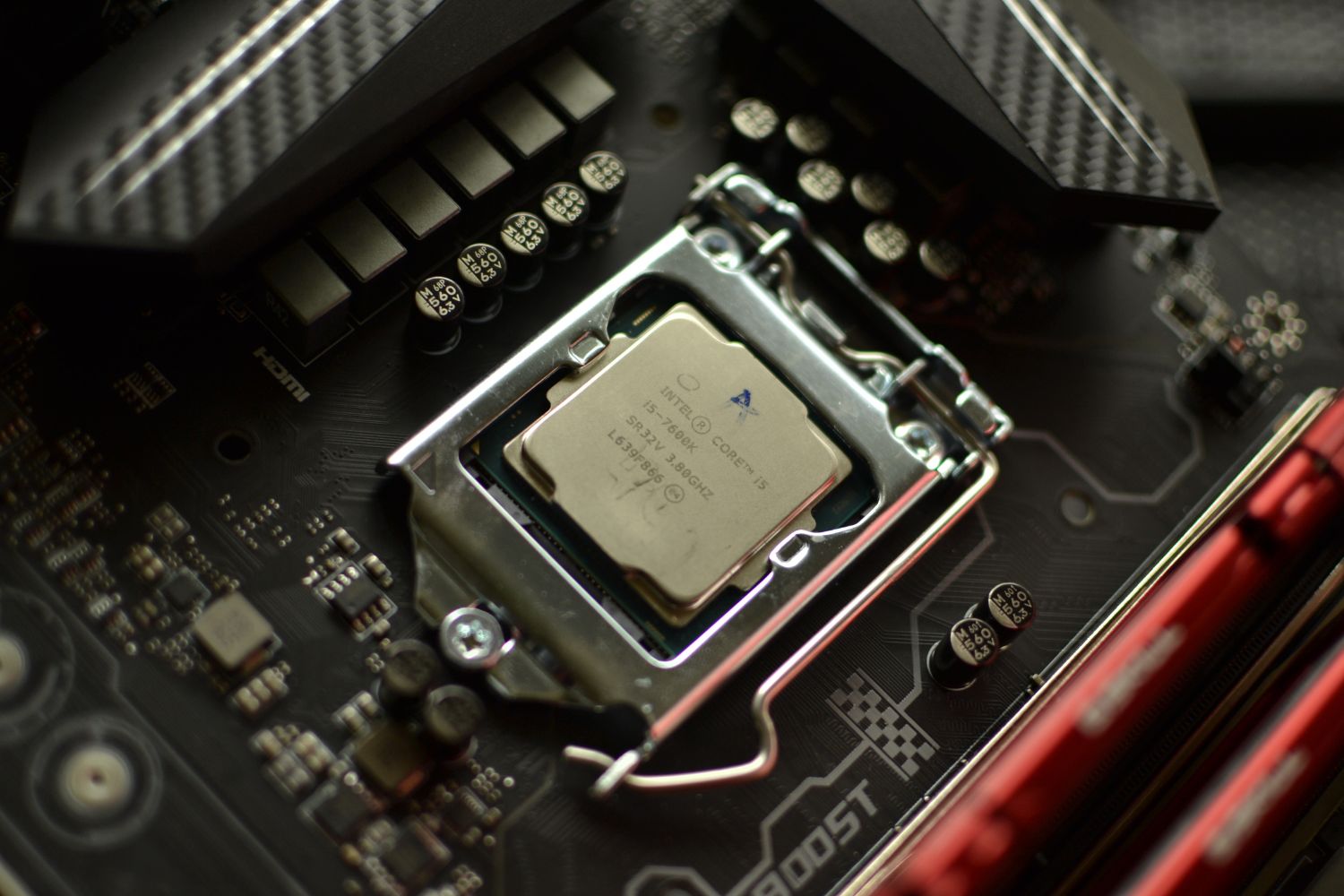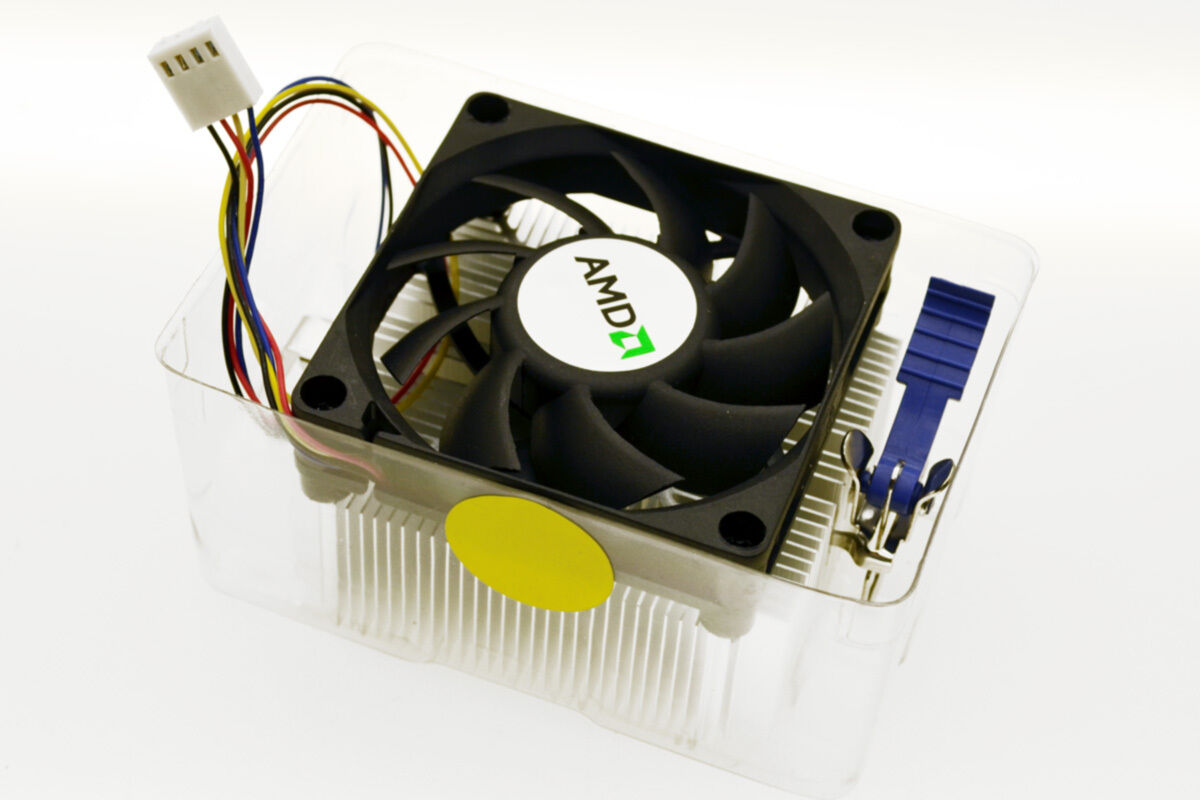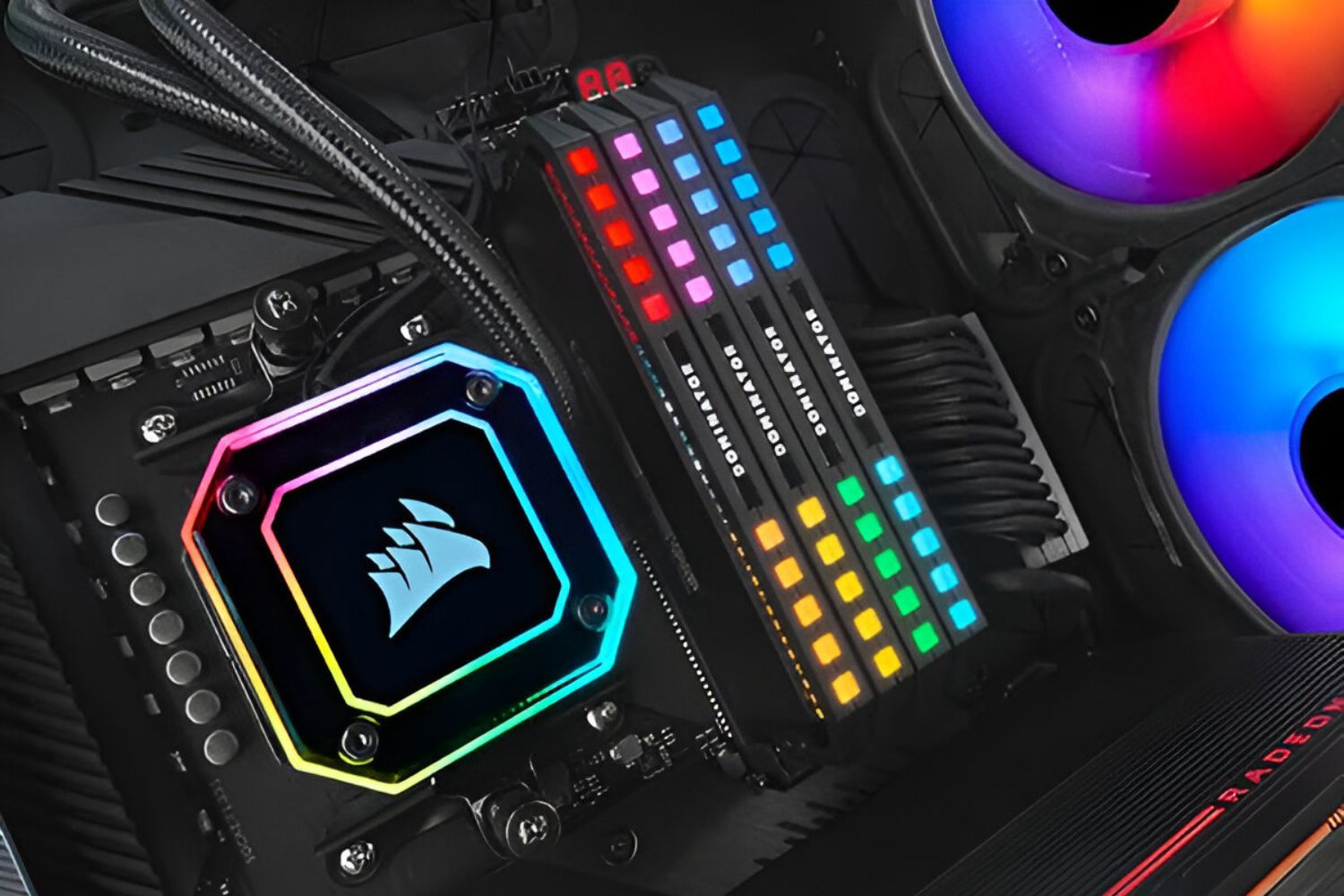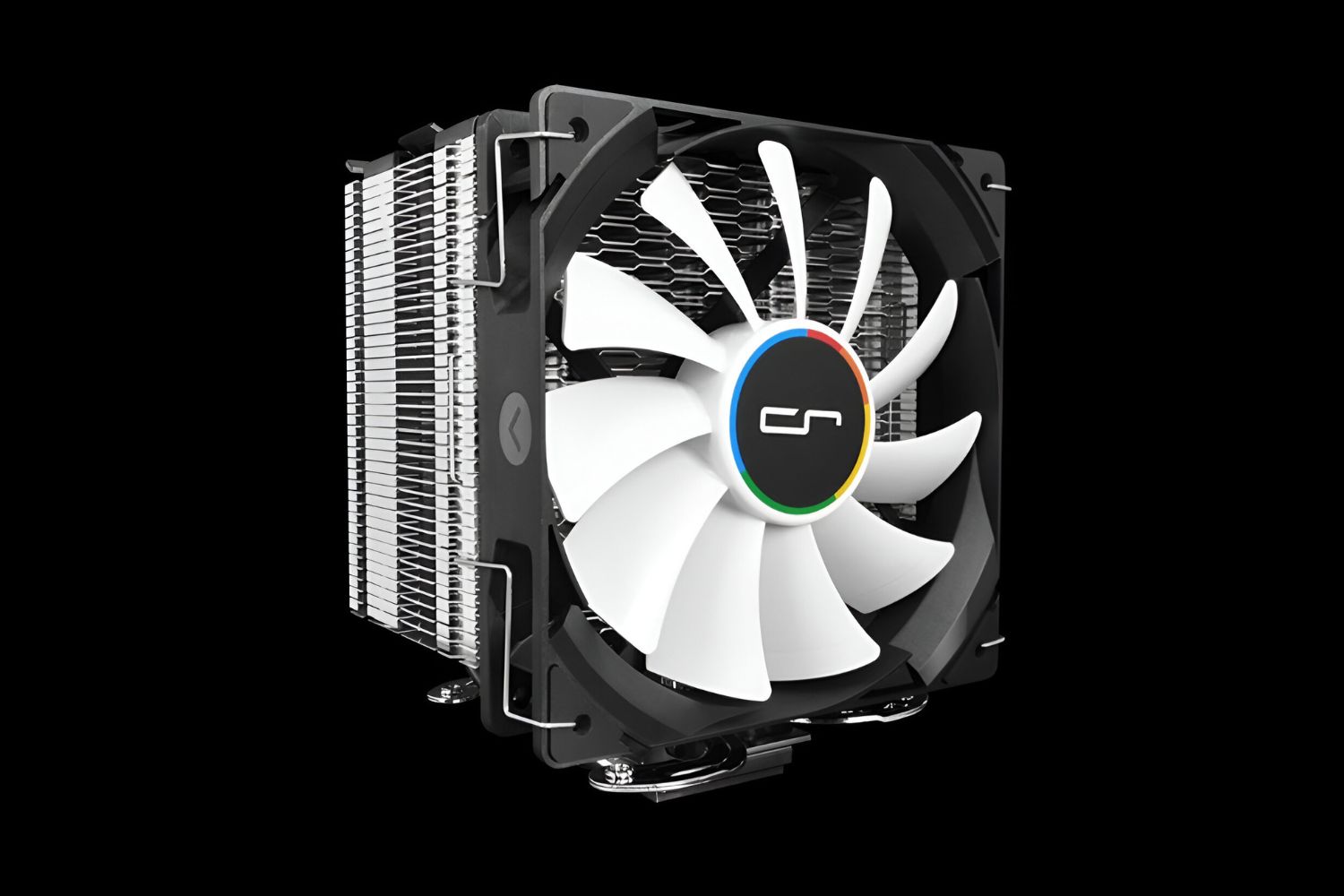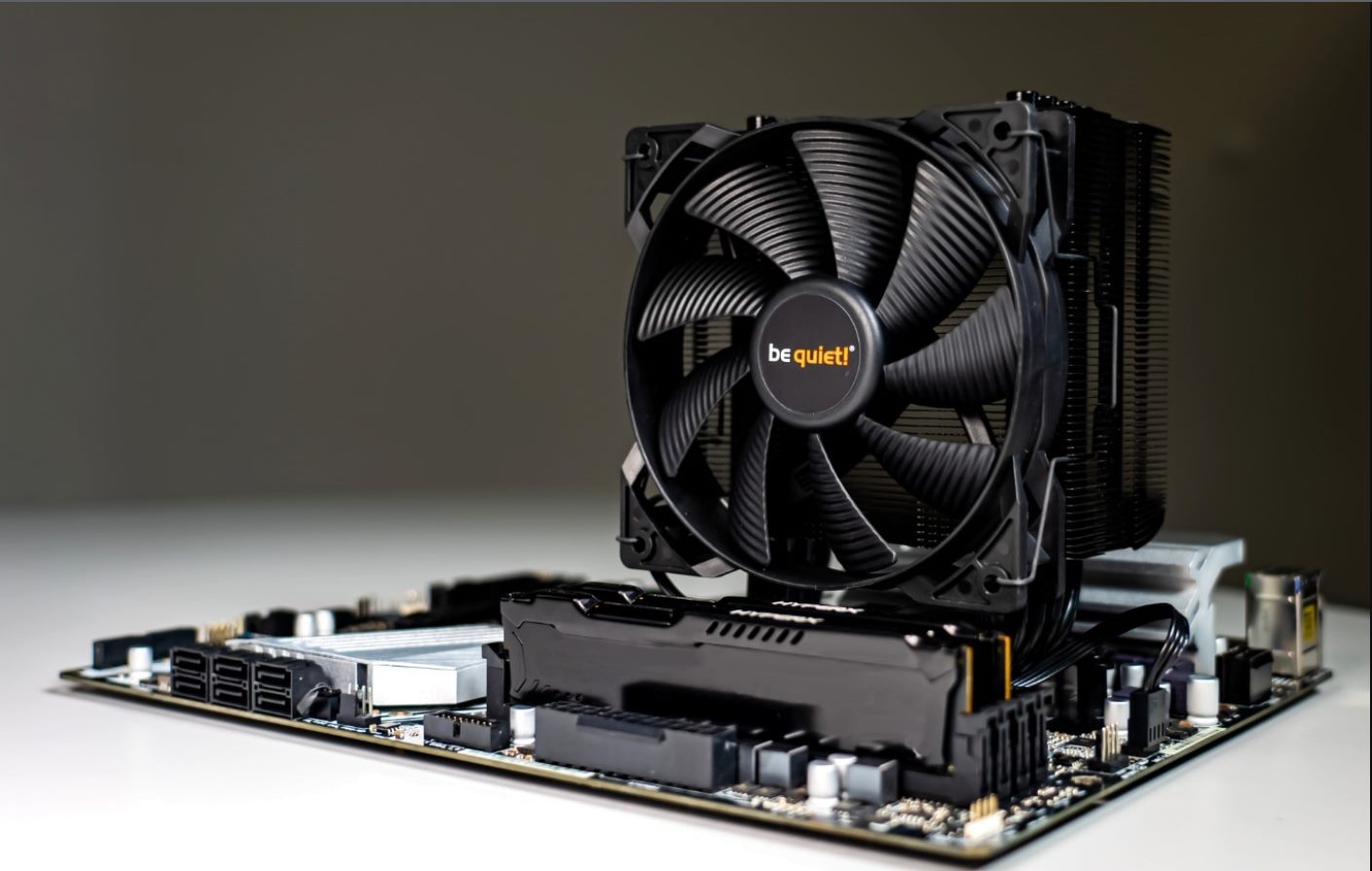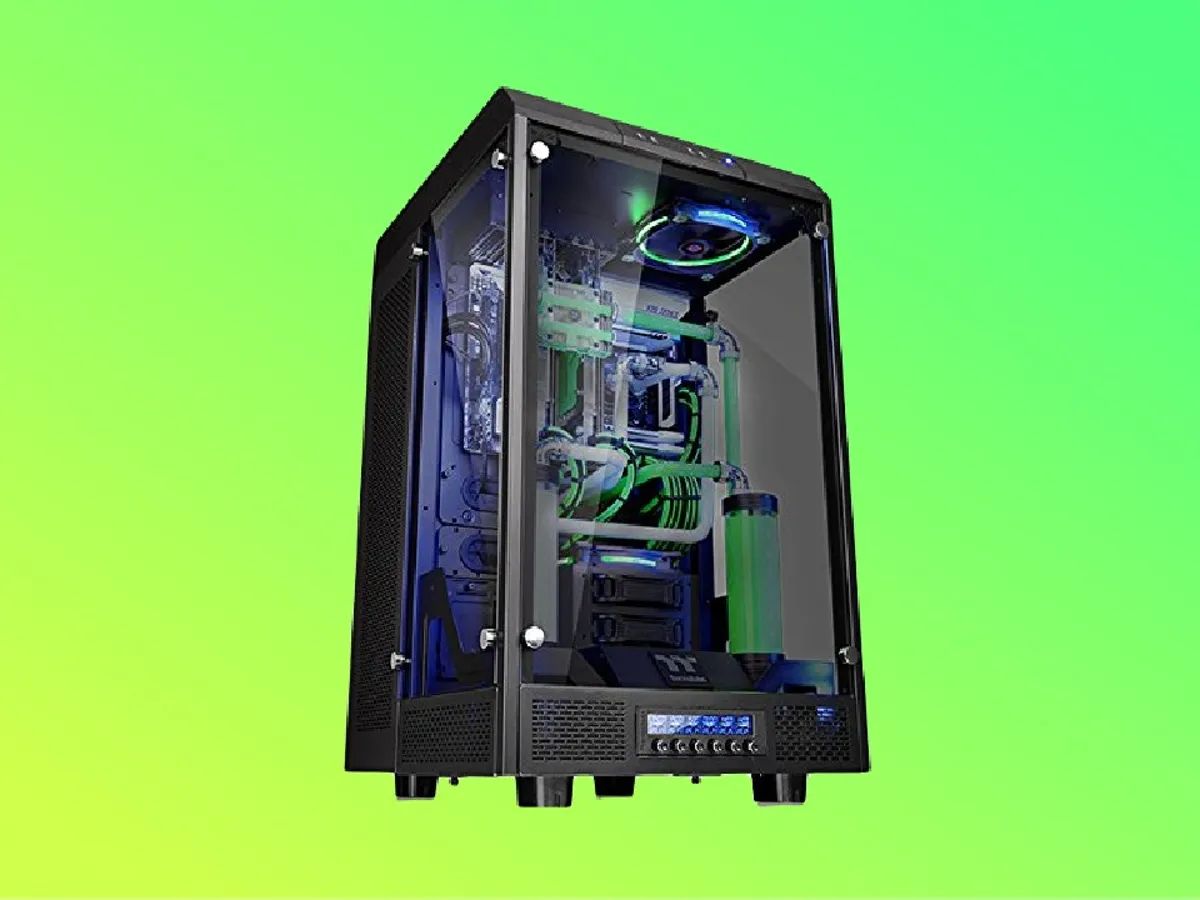What is a CPU Cooler?
A CPU (central processing unit) cooler is an essential component of a computer that helps regulate the temperature of the CPU. The CPU generates a significant amount of heat during operation, and without proper cooling, it can lead to overheating, which can cause instability, performance issues, and potentially damage the CPU.
A CPU cooler works by dissipating the heat generated by the CPU and maintaining a stable operating temperature. It consists of a heatsink, which is typically made of metal such as aluminum or copper, and a fan or fans that help to circulate the air and facilitate heat dissipation.
The heatsink is designed with a multitude of fins or ridges that provide a larger surface area for heat to be transferred away from the CPU. The fan(s) attached to the heatsink either blow air directly onto the heatsink or pull the warm air away from it, depending on the cooling design.
There are two main types of CPU coolers: air coolers and liquid coolers. Air coolers are the most common and affordable option, while liquid coolers offer more advanced cooling capabilities.
CPU coolers are an integral part of any computer, whether it’s a gaming rig or a workstation. They play a crucial role in maintaining the performance and longevity of the CPU by preventing it from reaching dangerously high temperatures.
Why Do You Need a CPU Cooler?
A CPU cooler is essential for several reasons:
- Temperature Regulation: CPUs generate a considerable amount of heat during operation. Without a CPU cooler, the CPU can quickly overheat, leading to reduced performance and potentially permanent damage. A CPU cooler helps dissipate this heat efficiently and keeps the temperature within safe limits.
- Stability and Performance: When a CPU overheats, it can cause system instability, leading to crashes, freezes, and unexpected shutdowns. By maintaining optimal temperatures, a CPU cooler ensures stable operation and allows your computer to perform at its best.
- Longevity: Excessive heat is detrimental to the lifespan of a CPU. Continuous exposure to high temperatures can degrade the internal components and reduce their longevity. A CPU cooler helps prolong the life of your CPU by preventing overheating and minimizing wear and tear.
- Overclocking: Overclocking is the process of running a CPU at higher frequencies than its default settings. This increases performance but also generates more heat. A high-quality CPU cooler is crucial in managing the increased heat output associated with overclocking and maintaining stability.
- Noise Reduction: While not directly related to cooling, certain CPU coolers can also reduce noise levels. CPUs fans can become loud and disruptive, especially under heavy loads. Upgrading to a quieter CPU cooler can provide a more peaceful computing experience.
In summary, a CPU cooler is necessary to prevent overheating, maintain system stability, improve performance, extend the lifespan of your CPU, and potentially reduce noise levels. Whether you engage in intensive tasks like gaming or rely on your computer for daily activities, a reliable CPU cooler is an essential component to ensure optimal performance and longevity.
Different Types of CPU Coolers
When it comes to CPU coolers, there are primarily two types: air coolers and liquid coolers. Let’s take a closer look at each:
Air Coolers
Air coolers are the most common and widely used type of CPU coolers. They consist of a heatsink and a fan or fans that work together to dissipate heat. The heatsink is typically made of metal, such as aluminum or copper, and is designed with fins or ridges that increase the surface area for better heat transfer.
The fan(s) attached to the heatsink help to move the air across the heatsink, facilitating heat dissipation. Air coolers come in various sizes and designs, with some offering larger heatsinks and multiple fans for enhanced cooling performance.
Liquid Coolers
Liquid coolers, also known as AIO (all-in-one) coolers, utilize a closed loop system that uses liquid, usually a mixture of water and antifreeze (coolant), to transfer heat away from the CPU. The liquid circulates through tubes that connect the CPU block and the radiator.
The CPU block contains a cold plate that sits on top of the CPU, absorbing heat. The heated liquid then flows to the radiator, where it is cooled by fans, dissipating the heat. The cooled liquid then returns to the CPU block to repeat the process.
Liquid coolers offer several advantages over air coolers, such as better cooling performance, especially in high heat scenarios or during overclocking. They can also be more aesthetically pleasing, as they often have RGB lighting options. However, they tend to be more expensive and require more complex installation compared to air coolers.
Both air coolers and liquid coolers have their pros and cons, and the choice ultimately depends on factors like your budget, cooling needs, case compatibility, and personal preferences. It’s worth noting that high-end air coolers can provide excellent cooling performance comparable to some liquid coolers, while liquid coolers excel in extreme cooling scenarios.
Now that we’ve explored the different types of CPU coolers, let’s delve into the important considerations when choosing the right CPU cooler for your needs.
Air Coolers
Air coolers are a popular and reliable type of CPU cooler that utilizes a combination of a heatsink and a fan or fans to dissipate heat from the CPU. They are widely known for their simplicity, affordability, and effective cooling performance. Here’s a closer look at air coolers:
Heatsink Design: Air coolers consist of a heatsink, typically made of metal like aluminum or copper, which is designed with a series of fins or ridges. These fins increase the surface area, allowing heat to be transferred away from the CPU more efficiently. The design may vary, with different shapes, sizes, and heatpipe configurations, which impact cooling performance.
Fan(s): The heatsink is complemented by one or more fans that help move air across the heatsink’s fins, facilitating heat dissipation. The fan speed can be adjusted to provide a balance between cooling performance and noise levels. Some air coolers come with multiple fans for improved airflow and heat dissipation.
Installation: Air coolers are relatively easy to install. Most air coolers use a mounting system that requires attaching a backplate to the motherboard and securing the cooler using screws or clips. It’s important to ensure compatibility with your CPU socket before purchasing an air cooler.
Performance: Air coolers offer excellent cooling performance and can handle standard operating conditions efficiently. They are capable of effectively dissipating heat, keeping the CPU temperature within safe limits even during demanding tasks.
Noise Levels: The noise level of an air cooler depends on factors like fan speed, airflow, and overall design. While some high-performance air coolers can produce more noise, many manufacturers have developed quieter versions with features such as larger, slower-spinning fans and noise-dampening materials.
Size and Clearance: Air coolers come in various sizes, from compact low-profile models to towering coolers that can be several inches tall. It’s crucial to consider the dimensions and clearance of your computer case to ensure proper fitment of the cooler.
Cost: Air coolers are generally more affordable than liquid coolers, making them a popular choice for budget-conscious builders. They offer a cost-effective cooling solution without compromising performance.
Overall, air coolers are a reliable and practical choice for most users. They provide efficient cooling performance, easy installation, and a range of options to suit different budgets and needs. However, if you’re looking for extreme cooling performance or have specific aesthetic requirements, you may consider exploring liquid coolers.
Liquid Coolers
Liquid coolers, also known as AIO (all-in-one) coolers, offer a more advanced cooling solution compared to air coolers. They use a closed loop system that circulates liquid, typically a mixture of water and antifreeze (coolant), to dissipate heat from the CPU. Let’s explore the key features and considerations of liquid coolers:
CPU Block: The liquid cooler consists of a CPU block that sits on top of the CPU. This block contains a cold plate, typically made of copper, that absorbs the heat generated by the CPU. The CPU block is responsible for transferring heat from the CPU to the liquid in the cooler.
Radiator: The heated liquid flows from the CPU block to a radiator, usually mounted on the case’s rear or top. The radiator is equipped with one or more fans that help dissipate heat by pulling cool air into the radiator and pushing out the warm air. Efficient radiators facilitate effective heat exchange and cooling performance.
Tubing: The liquid cooler’s closed loop system includes tubes that connect the CPU block and the radiator. These tubes are usually made of flexible, durable materials like rubber or reinforced plastic. They transport the heated liquid from the CPU block to the radiator for cooling and then return the cooled liquid back to the CPU block.
Fan Performance: The fans attached to the radiator play a crucial role in cooling efficiency. They help to expel the warm air generated by the liquid’s heat exchange, ensuring effective cooling. Fans with higher airflow and static pressure ratings contribute to better cooling performance.
Installation: Installing a liquid cooler can be more complex than installing an air cooler due to additional components and potential compatibility issues. It typically involves mounting the CPU block, attaching the radiator to the case, and connecting the fans and tubes. Following the manufacturer’s instructions is essential to ensure proper installation.
Cooling Performance: Liquid coolers excel in heat dissipation and provide efficient cooling performance, particularly in situations where CPUs generate substantial heat or during overclocking. They can handle higher thermal loads and keep the CPU temperature lower compared to many air coolers.
Aesthetics and RGB Lighting: Liquid coolers often offer a visually appealing aspect, with many models featuring customizable RGB lighting options. This can add a touch of personalization and enhance the overall aesthetics of your computer build.
Cost: Liquid coolers tend to be more expensive than air coolers due to their advanced technology. The price can vary depending on factors such as brand, cooling performance, and additional features like RGB lighting.
Overall, liquid coolers are an excellent choice for users seeking top-tier cooling performance, especially for high-end CPUs or those engaging in demanding tasks like gaming or content creation. They offer efficient heat dissipation, customizable aesthetics, and the ability to handle extreme thermal loads. However, it’s important to consider factors like case compatibility, installation complexity, and budget when deciding whether a liquid cooler is the right choice for you.
Understanding TDP (Thermal Design Power)
TDP (Thermal Design Power) is a crucial specification to consider when choosing a CPU cooler. It refers to the maximum amount of heat, measured in watts, that a CPU is expected to generate under a typical workload. Understanding TDP is important because it helps you select a CPU cooler that can effectively dissipate heat and keep your CPU temperatures within safe limits. Here’s what you need to know about TDP:
Heat Generation: CPUs generate heat as a byproduct of their operation. The TDP value represents the maximum amount of heat that a CPU is expected to produce. CPUs with higher TDP ratings tend to generate more heat during operation.
Choosing a Suitable CPU Cooler: It’s crucial to select a CPU cooler that can handle the TDP of your CPU. The cooler should have a TDP rating equal to or greater than the TDP of your CPU to ensure efficient heat dissipation. Choosing a cooler with a higher TDP rating provides a buffer and allows for better cooling performance.
Overclocking Considerations: If you plan to overclock your CPU, where you increase its clock speed beyond the manufacturer’s specified limits, you will generate more heat. In such cases, it is recommended to choose a CPU cooler with a higher TDP rating to handle the additional heat output during overclocking.
Real-World Considerations: While TDP provides a general guideline about a CPU’s heat output, real-world performance may vary. Different applications and workloads can affect the actual heat generated by the CPU. It is advisable to check reviews or consult reliable sources to gain insight into a CPU’s thermal performance under varying conditions.
Importance of Cooling Performance: The efficacy of a CPU cooler’s cooling performance is directly related to its ability to dissipate heat efficiently. A cooler designed for a specific TDP range should be able to keep the CPU temperatures within safe operating limits even during heavy workloads or overclocking scenarios.
Other Factors to Consider: While TDP is an essential factor, it’s not the sole consideration when choosing a CPU cooler. Factors such as the cooler’s design, fan speed, airflow, and materials also impact its cooling efficiency. Considering these factors alongside TDP will help you make an informed decision.
Understanding TDP and its significance in CPU cooling is vital to ensure the stability, performance, and longevity of your system. By selecting a CPU cooler that can handle the TDP of your CPU, you can effectively manage heat dissipation and maintain optimal temperatures for smooth and reliable operation.
Factors to Consider While Choosing a CPU Cooler
When selecting a CPU cooler, there are several important factors to consider to ensure optimal cooling performance and compatibility with your system. Here are the key factors to keep in mind while choosing a CPU cooler:
- Compatibility with Your CPU Socket: Before purchasing a CPU cooler, verify that it is compatible with your CPU socket. Different CPU coolers are designed to fit specific sockets, such as Intel LGA 1151 or AMD AM4. Ensure that the cooler supports your CPU socket to avoid any compatibility issues.
- Size and Clearance Considerations: Take into account the dimensions of the CPU cooler and the available space in your computer case. Larger CPU coolers may interfere with adjacent components like RAM modules or PCI-e slots. Measure the clearance in your case to ensure that the cooler fits without causing any conflicts.
- Cooling Performance: Consider the cooling performance of the CPU cooler. Look for coolers with high heat dissipation capabilities, efficient airflow, and well-designed heatsinks with ample surface area for heat transfer. Reviews and benchmarks can help you identify coolers with excellent cooling performance.
- Noise Level: The noise level of the CPU cooler can impact your overall computing experience. Look for coolers with quiet fans or specialized noise reduction features for a more peaceful environment. Consider the fan speed, airflow, and any noise-dampening technologies employed by the cooler.
- Budget: Determine your budget for a CPU cooler and find a balance between cost and performance. Air coolers are generally more affordable, while liquid coolers can be pricier due to their advanced technology. Consider your cooling requirements and select a cooler that fits your budget without compromising on quality.
- Aesthetics: If the appearance of your computer is important to you, consider the aesthetics of the CPU cooler. Some coolers offer customizable RGB lighting or sleek designs that can enhance the overall look of your system. Choose a cooler that aligns with your preferred visual style.
- Installation Process: Assess the complexity of installing the CPU cooler. Some coolers may require specific mounting mechanisms or additional tools. Consider your comfort level with installing computer components and choose a cooler that offers a straightforward installation process.
By considering these factors, you can select a CPU cooler that suits your needs, matches your system’s requirements, and provides the optimal cooling performance for your CPU. Take your time to research and compare different options to make an informed decision that ensures the stability and longevity of your system.
Compatibility with Your CPU Socket
One of the most crucial factors to consider when choosing a CPU cooler is its compatibility with your CPU socket. Different CPUs have various socket designs, and selecting a cooler that fits your CPU socket is essential for proper installation and effective cooling performance. Here’s what you need to know about ensuring compatibility:
Identifying Your CPU Socket: Before purchasing a CPU cooler, identify the socket type of your CPU. Common CPU sockets include Intel’s LGA (Land Grid Array) sockets such as LGA 1151 or LGA 1200, and AMD’s AM (Accelerated Processing Unit) sockets such as AM4 or AM3+. Information about the socket type can be found in your CPU’s specifications or by referring to your motherboard’s manual.
Check CPU Cooler Specifications: CPU coolers are designed to fit specific socket types. Check the specifications of the cooler you’re considering to ensure it supports your CPU socket. Cooler manufacturers typically list compatible socket types in their product descriptions or on the packaging.
Mounting Mechanism: Different CPU coolers use various mounting mechanisms to attach to the CPU socket. Ensure that the mounting mechanism of the cooler matches the mounting holes and brackets present on your motherboard. Some coolers offer compatibility with multiple socket types by including different mounting brackets or adapters.
Know the Limitations: Be aware of any limitations or restrictions associated with your CPU socket. Some CPU sockets have specific clearance requirements due to nearby components like RAM slots or voltage regulators. Consider the available space in your case and verify that the cooler’s dimensions and design do not interfere with other components.
Socket Compatibility Charts: Many cooler manufacturers provide compatibility charts or online tools that allow you to check if a particular CPU cooler is compatible with your CPU socket. These resources can be helpful in selecting a compatible cooler without the need for manual cross-referencing.
Consider Future Compatibility: If you’re planning to upgrade your CPU in the future, it’s worth considering a cooler that supports not only your current CPU socket but also the sockets you may be interested in upgrading to. This future-proofs your cooling solution and saves you the hassle of purchasing a new cooler when you upgrade your CPU.
Choosing a CPU cooler that is compatible with your CPU socket is crucial for ensuring a proper fit, optimum cooling performance, and system stability. Always double-check compatibility before making a purchase to avoid compatibility issues and ensure a seamless installation process.
Size and Clearance Considerations
When selecting a CPU cooler, it is important to consider the size and clearance requirements to ensure proper fitment within your computer case. Taking into account the available space and compatibility with other components will help you choose a cooler that fits your system effectively. Here are some key points to consider:
Cooler Dimensions: CPU coolers come in various sizes, including height, width, and depth. These dimensions can vary significantly between models and manufacturers. Before purchasing a cooler, check its specifications and compare them to the available space in your case. Ensuring there is enough clearance for the cooler prevents any potential interference with other components.
Clearance for RAM Modules: Some CPU coolers, particularly tower-style air coolers, can be bulky and may interfere with adjacent RAM modules. Verify that the cooler allows enough clearance for your RAM modules, especially if you have modules with large heat spreaders or taller profiles. Low-profile coolers or coolers with an offset design can be more suitable for systems with taller RAM modules.
Clearance for PCIe Slots: In systems with multiple expansion cards or graphics cards, it is important to consider the clearance between the CPU cooler and the PCIe slots. Bulkier CPU coolers may obstruct the installation or removal of expansion cards. Ensuring adequate clearance allows for easy access and prevents any potential conflict between the cooler and the PCIe slots.
Case Dimensions: The size of your computer case also plays a significant role in choosing an appropriately sized CPU cooler. Smaller form factor cases may have limited clearance for larger coolers. Consider the case’s maximum CPU cooler height and the available clearance near the CPU socket area to select a cooler that fits comfortably without overcrowding or touching the case’s side panel.
Airflow and CPU Cooler Placement: The size and design of the CPU cooler can impact the overall airflow within your system. Larger coolers with multiple fans may affect the airflow dynamics and obstruct the intake or exhaust of case fans. It’s important to consider how the CPU cooler’s placement will impact the overall cooling efficiency of your system.
Orientation and Motherboard Layout: Different motherboard layouts and orientations can influence the compatibility of CPU coolers. Some coolers require a specific orientation or alignment with the motherboard’s mounting holes or backplate. Ensure that the chosen cooler is compatible with your motherboard’s layout and follows the recommended installation guidelines.
Taking size and clearance considerations into account when selecting a CPU cooler ensures a proper and hassle-free installation. It helps prevent potential conflicts with RAM modules, expansion cards, or case components and ensures that the cooler effectively fits within the available space in your computer case. Assess your case’s dimensions, available clearance, and the compatibility requirements of the cooler to make an informed decision.
Cooling Performance
The cooling performance of a CPU cooler is a critical factor to consider when selecting the most suitable option for your system. Effective cooling is essential to maintain optimal temperatures for the CPU, prevent overheating, and ensure stability and longevity. Here are key aspects to evaluate when assessing the cooling performance of a CPU cooler:
Heat Dissipation: A high-quality CPU cooler should excel at dissipating heat generated by the CPU. The cooler’s design, such as the heatsink and heat pipes, plays a vital role in efficiently distributing and transferring heat away from the CPU. Larger heatsinks with more surface area tend to offer better heat dissipation capabilities.
Fan Configuration: The fans on a CPU cooler are responsible for moving air through the heatsink, facilitating heat transfer. Evaluating the fan configuration, such as size, airflow, and speed, is important. Larger fans typically move more air but may produce more noise. Fans with higher airflow and static pressure ratings are better at pushing air through dense heatsink fins and optimizing cooling performance.
Noise Levels: While cooling performance is crucial, it is essential to balance it with noise levels. Consider the noise generated by the CPU cooler’s fans during operation, especially if you prioritize a quieter computing environment. Look for coolers with quieter fans that offer optimal cooling performance without excessive noise. Noise levels are usually measured in decibels (dB), and manufacturers often provide this information in their product specifications.
Cooling Capacity: The cooling capacity of a CPU cooler is determined by its ability to handle the expected thermal load generated by the CPU. This can be estimated by considering the TDP (Thermal Design Power) of your CPU and selecting a cooler that matches or exceeds that TDP rating. A cooler with a higher TDP capacity may offer better cooling performance, particularly in situations where the CPU is overclocked or exposed to heavy workloads.
Real-World Performance: While specifications and benchmarks can provide a general idea of a CPU cooler’s cooling performance, keep in mind that real-world performance can vary depending on factors like ambient temperature, system configuration, and specific CPU-intensive applications. It is advisable to review reputable reviews and user feedback to gain insights into a cooler’s performance in different scenarios.
Thermal Management Software: Some CPU coolers come with dedicated software that allows fine-tuning of cooling performance. These software tools provide control over fan speeds, temperature monitoring, and customization options. Considering coolers with thermal management software can offer more precise control over cooling performance and enhance overall system efficiency.
Evaluating the cooling performance of a CPU cooler ensures your system remains thermally efficient and avoids issues caused by excessive heat. Assess the heat dissipation capabilities, fan configuration, noise levels, and cooling capacity of the cooler to make an informed decision that matches your system’s cooling requirements.
Noise Level
Noise level is an essential factor to consider when choosing a CPU cooler, especially if you prioritize a quiet computing environment. The noise generated by the cooler’s fans can impact your overall experience, particularly during intensive tasks or extended periods of computer use. Here are important considerations regarding noise level:
Fan Speed: Fan speed greatly influences the noise level produced by a CPU cooler. Typically, higher fan speeds result in louder operation as the blades move through the air more rapidly. Consider coolers that offer fan speed control options, allowing you to adjust the speed to achieve a balance between cooling performance and noise level.
Airflow Design: The design of the CPU cooler’s fan blades and the air pathway contributes to noise generation. Fans with specially designed blades, such as those optimized for quiet operation or with curved designs, can help reduce noise while maintaining efficient airflow. Additionally, coolers with improved airflow paths and reduced turbulence can minimize noise levels.
Noise Reduction Features: Some CPU coolers are equipped with noise reduction features to minimize sound while maintaining effective cooling. These features may include rubber dampeners or pads to reduce vibrations, specialized fan mounts for noise isolation, or noise-absorbing materials on the heatsink or fan frame. Consider coolers that offer these features if noise reduction is a priority for you.
Fan Bearings: The type of bearing used in the CPU cooler’s fan can impact noise levels and longevity. Sleeve bearings are typically more affordable but tend to generate more noise as they wear down over time. Hydraulic or fluid dynamic bearings offer quieter operation and longer lifespan but typically come at a higher price point. Consider the type of bearing used in the fan when evaluating noise levels.
Noise Ratings: Manufacturers often provide noise ratings, usually measured in decibels (dB), in product specifications. These ratings provide a quantified measure of the noise level produced by the cooler. Lower dB values indicate quieter operation. Pay attention to these ratings and compare them to find a suitable CPU cooler that meets your desired noise level requirements.
User Reviews and Recommendations: Reading user reviews and recommendations can provide valuable insights into a CPU cooler’s noise level. Users often share their experiences and opinions regarding noise performance. Additionally, online communities and forums dedicated to PC building and cooling can offer guidance on choosing coolers known for their quiet operation.
By considering the noise level of a CPU cooler, you can create a more pleasant and comfortable computing environment. Evaluating factors such as fan speed, airflow design, noise reduction features, fan bearings, and noise ratings helps you select a CPU cooler that meets your preferences for noise level while still providing efficient cooling performance for your system.
Budget
When considering a CPU cooler, budget is an important factor that influences your purchasing decision. The cost of CPU coolers can vary significantly, and finding a balance between your desired cooling performance and your budget is essential. Here are key points to consider regarding budget:
Price Range: CPU coolers come in different price ranges, from budget-friendly options to high-end models. Determine your budget before starting your search, as this will help narrow down your options and focus on coolers within your price range.
Performance Needs: Assess your cooling requirements and consider the performance needed for your specific use case. If you have a high-end CPU or plan to engage in demanding tasks like overclocking or intense gaming, you may require a cooler with greater cooling capabilities, which may come at a higher price point. However, for general use or lower power CPUs, a more affordable cooler may suffice.
Air vs. Liquid Coolers: There can be a significant price gap between air coolers and liquid coolers. Air coolers generally offer good cooling performance at a more budget-friendly price. On the other hand, liquid coolers often come with a higher price tag due to their more advanced technology and additional components.
Brand and Quality: Well-known brands often come at a premium price, but they also tend to provide reliable performance, better build quality, and customer support. Consider the reputation and customer feedback associated with different brands and evaluate the trade-off between cost and quality.
Future Upgrades: If you plan to upgrade your CPU in the future, consider investing a bit more in a CPU cooler that can handle higher TDP CPUs. This way, you can avoid the need to replace the cooler when you upgrade, saving you money in the long run.
Reviews and Recommendations: Reading reviews, both expert and user-based, can offer insights into the performance and value for money of different CPU coolers. Look for well-regarded options within your budget range and consider the overall satisfaction and experiences of other users when making your decision.
Warranty: Check the warranty offered by the manufacturer. A longer warranty period often indicates the manufacturer’s confidence in the quality and durability of their product. Considering a cooler with a solid warranty can provide peace of mind and save you additional expenses in case of any defects or failures.
Ultimately, finding the right balance between budget and cooling performance is a personal decision. Assessing your needs, considering different brands and models, reading reviews, and comparing prices will help you select a CPU cooler that delivers the cooling performance you require at a price that fits your budget.
Taking Aesthetics into Account
While functionality and performance are crucial factors when choosing a CPU cooler, aesthetics also play a role, especially for users who value the visual appeal of their computer build. Considering the aesthetics of a CPU cooler can help you create a cohesive and visually pleasing system. Here are key points to consider:
Cooler Design: CPU coolers come in various designs, ranging from sleek and minimalistic to bold and eye-catching. Consider the overall design theme of your computer build and choose a cooler that complements the aesthetics. Some coolers feature color accents, metallic finishes, or even customizable RGB lighting to match your desired style.
RGB Lighting: RGB lighting has become incredibly popular in modern PC builds, allowing users to customize the colors and effects of their components. If you desire dynamic lighting effects, consider CPU coolers with RGB lighting options. These coolers often come with software control that enables you to synchronize lighting with other RGB-enabled components, creating a unified and visually stunning system.
Clear or Tinted Side Panels: If your computer case features a clear or tinted side panel, you may want to choose a CPU cooler that showcases its design or lighting through the panel. Coolers with visually appealing heatsink designs, heat pipe configurations, or unique fan designs can enhance the overall aesthetics when visible through the side panel.
Size and Compatibility: Consider how the size and design of the CPU cooler will fit within your case and complement other components. In some cases, larger coolers may obstruct the view of other components. Consider the balance between aesthetics and practicality to choose a cooler that fits well and showcases your desired components while maintaining good airflow and clearance.
Cable Management: Some CPU coolers come with integrated cable management features to help keep cables neat and organized. Choosing a cooler with these features can contribute to a clean and clutter-free appearance, especially around the CPU socket area, enhancing the overall aesthetic appeal of your system.
Brand and Aesthetic Reputation: Different brands have distinct design aesthetics for their CPU coolers. Research the various options and consider the brand’s reputation for delivering visually appealing products. Look for user reviews, images, and recommendations to get an idea of how a particular cooler will fit into your desired aesthetic plan.
By taking aesthetics into account when choosing a CPU cooler, you can create a stunning and visually pleasing system that aligns with your personal style and preferences. Remember to strike a balance between aesthetics and performance to ensure that your chosen cooler not only enhances the appearance of your build but also provides efficient and effective cooling for your CPU.
Installation Process
The installation process of a CPU cooler is an important consideration to ensure a smooth and hassle-free installation experience. Different coolers may have varying installation methods and requirements. Understanding the installation process in advance can save time, prevent frustration, and ensure proper installation. Here are key points to consider:
Read the Instructions: Before starting the installation, carefully read the instructions provided by the cooler manufacturer. The instructions will outline the specific steps and requirements for installing the cooler correctly.
Compatibility: Ensure that the CPU cooler is compatible with your CPU socket and motherboard. Confirm that the cooler’s mounting mechanism aligns with the corresponding holes or brackets on your motherboard.
Preparation: Before installation, gather the necessary tools and components, such as a screwdriver, thermal paste (if required), and any included mounting hardware. Clear the workspace and ensure proper lighting for easier installation.
Removing the Old Cooler: If you are replacing an existing CPU cooler, carefully remove the old cooler following the proper steps. Clean the CPU surface thoroughly, removing any residual thermal paste, to ensure a clean contact for the new cooler.
Mounting Backplate: Some coolers may require the installation of a backplate on the rear of the motherboard. Attach the backplate securely according to the manufacturer’s instructions. The backplate provides stability and support for the cooler.
Applying Thermal Paste: Depending on the cooler design, you may need to apply a small amount of thermal paste to the CPU surface. Follow the manufacturer’s guidelines for applying the thermal paste correctly. This step ensures proper heat transfer between the CPU and the cooler.
Mounting the Cooler: Carefully place the CPU cooler onto the CPU surface, ensuring proper alignment with the mounting holes or brackets. Apply gentle and even pressure to secure the cooler in place, following the instructions provided. Be cautious not to overtighten the mounting screws, as this may damage the cooler or affect CPU contact.
Connecting Fans and Cables: Connect the cooler’s fans to the appropriate fan headers on the motherboard. Ensure that the cables are neatly routed and do not block other components or interfere with proper airflow. Some coolers may include additional cables for RGB lighting or fan control, which should be connected according to the instructions.
Verification and Testing: Once the cooler is installed, double-check that all connections are secure and properly aligned. Power on your system and monitor CPU temperatures to ensure that the cooler is functioning correctly and that temperatures are within safe limits. Monitor fan speeds and adjust them if necessary using the appropriate software or BIOS settings.
Manufacturer Support: If you encounter any difficulties during the installation process, consult the manufacturer’s support resources, including online guides or video tutorials. Additionally, you can reach out to customer support for clarification or assistance.
Following the proper installation process ensures an effective and reliable cooling solution for your CPU. Take the time to familiarize yourself with the instructions, gather the necessary tools, and handle each step with care to achieve optimal installation results.
Maintaining a CPU Cooler
Maintaining a CPU cooler is essential to ensure its longevity, optimize cooling performance, and keep your system running smoothly. Regular maintenance helps prevent issues like dust buildup, fan malfunctions, and thermal inefficiency. Here are key steps to keep your CPU cooler in top condition:
Cleaning: Dust and debris can accumulate on the heatsink fins and fan blades over time, obstructing airflow and reducing cooling efficiency. Regularly clean the CPU cooler by using compressed air or a soft brush to remove dust. Be gentle to avoid damaging the components.
Thermal Paste Replacement: If you notice higher CPU temperatures or have disassembled the cooler, it may be necessary to replace the thermal paste. Over time, the paste can dry out or lose effectiveness. Follow proper instructions for removing the old paste and applying a fresh layer to optimize heat transfer between the CPU and cooler.
Fan Maintenance: Check the CPU cooler’s fans for any obstructions or signs of wear. Ensure the fans are spinning freely and listen for any unusual noises. Remove any debris that may have accumulated on the fan blades. If a fan is not functioning correctly, consider replacing it to avoid potential cooling issues.
Monitor Temperatures: Regularly monitor your CPU temperatures using monitoring software or your computer’s BIOS. Keep an eye out for significant increases in temperature, which may indicate potential cooling issues. If temperatures are consistently high, it may be necessary to check for dust buildup or ensure proper fan operation.
Fan Speed Control: Many motherboards offer fan speed control options in the BIOS or through dedicated software. Ensure that the CPU cooler’s fan speeds are properly configured to strike a balance between cooling performance and noise levels. Adjust fan curves if needed to achieve optimal cooling efficiency.
Keep an Eye on Airflow: Ensure that your computer case has proper ventilation and airflow. Maintain a clean and organized internal layout, allowing for unobstructed airflow around the CPU cooler. Improving overall case airflow can also enhance the cooling performance of the CPU cooler.
Regular System Maintenance: Performing routine system maintenance, such as cleaning dust filters, ensuring proper cable management, and checking other cooling components (such as case fans), helps maintain overall system efficiency and reduces strain on the CPU cooler.
Manufacturer Recommendations: Manufacturers may provide specific maintenance recommendations or cleaning guidelines for their CPU coolers. Refer to the product documentation or the manufacturer’s website for any recommended maintenance tips or precautions.
Regular maintenance of your CPU cooler enhances its performance and prolongs its lifespan, allowing for efficient heat dissipation and reliable system operation. By following these maintenance steps and addressing any issues promptly, you can ensure that your CPU cooler performs optimally and helps keep your system running cool and stable.
Conclusion
Choosing the right CPU cooler is crucial for maintaining optimal temperatures, ensuring system stability, and maximizing the lifespan of your CPU. Understanding the different types of CPU coolers, considering factors like compatibility, size, cooling performance, noise levels, budget, aesthetics, installation process, and maintenance requirements is essential for making an informed decision.
Air coolers, with their reliable performance and affordability, are a popular choice for most users. They offer effective heat dissipation and come in various sizes to suit different system requirements.
Liquid coolers, on the other hand, offer superior cooling performance, especially in intensive tasks or during overclocking. They provide advanced heat dissipation capabilities, although they are generally pricier and require more complex installation.
Considering the compatibility with your CPU socket and case, evaluating cooling performance, minimizing noise levels, and striking a balance between budget and features are all important considerations when selecting a CPU cooler.
Additionally, taking aesthetics into account can help create a visually appealing system, especially with coolers offering customizable RGB lighting and sleek designs.
During the installation process, following the manufacturer’s instructions and ensuring proper mounting and thermal paste application is crucial for achieving optimal cooling performance.
Furthermore, regular maintenance of your CPU cooler, including cleaning dust, monitoring temperatures, checking fan operation, and maintaining optimal airflow, helps keep your cooling solution in prime condition.
With careful consideration of these factors and a solid understanding of your cooling requirements, you can select the right CPU cooler that fits your needs, enhances system performance, and ensures a cool and reliable computing experience.







